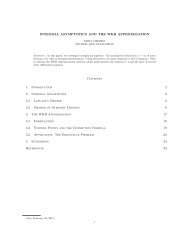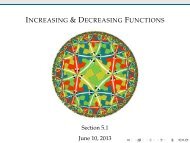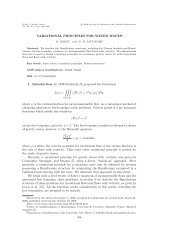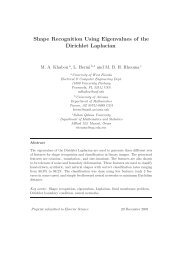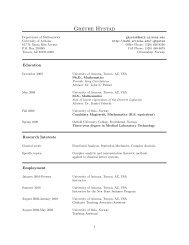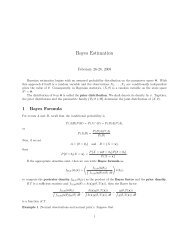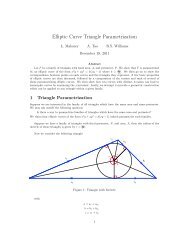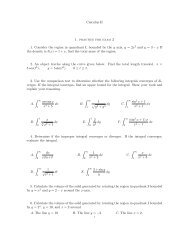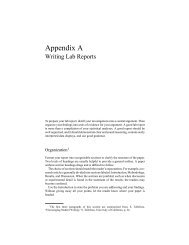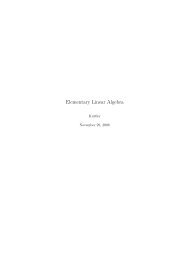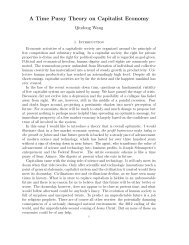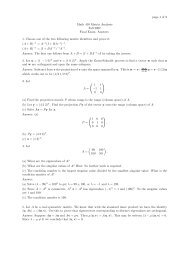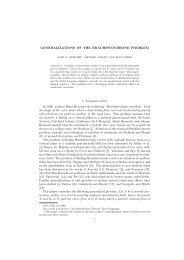Methods of Applied Mathematics Lecture Notes
Methods of Applied Mathematics Lecture Notes
Methods of Applied Mathematics Lecture Notes
You also want an ePaper? Increase the reach of your titles
YUMPU automatically turns print PDFs into web optimized ePapers that Google loves.
1.3. VECTOR FIELDS AND DIFFERENTIAL FORMS 35possible to find coordinates u and v near a given point (not the origin) sothat−y dx + x dy = du? (1.149)4. A differential form usually cannot be transformed into a constant differentialform, but there special circumstances when that can occur. Is itpossible to find coordinates u and v near a given point (not the origin) sothat−yx 2 + y 2 dx + xx 2 dy = du? (1.150)+ y2 5. Consider the vector fieldL = x(4 − x − y) ∂∂x + (x − 2)y ∂ ∂y . (1.151)Find its zeros. At each zero, find the linearization. For each linearization,find the eigenvalues. Use this information to sketch the vector field.6. Let h be a smooth function. Its gradient expressed with respect to Cartesianbasis vectors ∂/∂x and ∂/∂y is∇h = ∂h ∂∂x ∂x + ∂h ∂∂y ∂y . (1.152)Find the gradient ∇h expressed with respect to polar basis vectors ∂/∂rand ∂/∂θ.7. Let H be a smooth function. Its Hamiltonian vector field expressed withrespect to Cartesian basis vectors ∂/∂x and ∂/∂y isˇ∇H = ∂H∂y∂∂x − ∂H∂x∂∂y . (1.153)Find this same vector field expressed with respect to polar basis vectors∂/∂r and ∂/∂θ.8. Consider the vector fieldL = (1 + x 2 + y 2 )y ∂∂x − (1 + x2 + y 2 )x ∂ ∂y . (1.154)Find its linearization at 0. Show that there is no coordinate system near0 in which the vector field L is expressed by its linearization. Hint: Solvethe associated system <strong>of</strong> ordinary differential equations, both for L andfor its linearization. Find the period <strong>of</strong> a solution in both cases.9. Here is an example <strong>of</strong> a fixed point where the linear stability analysisgives an elliptic fixed point but changing to polar coordinates shows theunstable nature <strong>of</strong> the fixed point:dxdtdydt= −y + x(x 2 + y 2 ) (1.155)= x + y(x 2 + y 2 ). (1.156)



